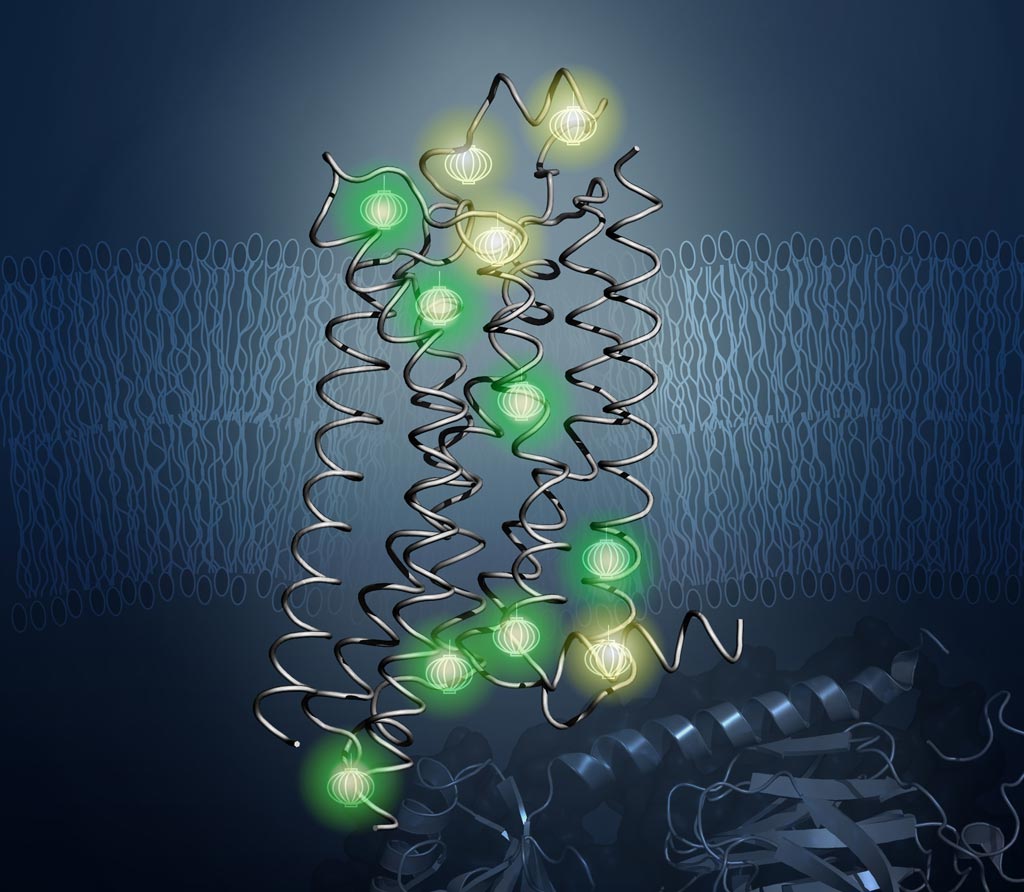Single Amino Acid Controls Signaling Molecule Activity
By LabMedica International staff writers
Posted on 09 Jan 2018
An advanced NMR (nuclear magnetic resonance) spectroscopy technique was used to follow the dynamic structural changes that occurred during binding of a drug to a cell membrane-spanning G protein-coupled receptor.Posted on 09 Jan 2018
The 826 human G protein-coupled receptors (GPCRs), which are involved in signaling across cellular membranes, govern a wide range of vital physiological processes, making GPCRs prominent drug targets.

Image: Probes revealed the inner architecture when the A2AAR protein transmitted molecular signals through a cell membrane (Photo courtesy of Drs. Kurt Wüthrich and Matthew Eddy, The Scripps Research Institute).
X-ray crystallography techniques have provided GPCR molecular architectures, but these methods lack the ability to detail additional structural dynamics that occur when the molecules are in motion. To complete this picture, investigators at The Scripps Research Institute (La Jolla, CA, USA) used NMR spectroscopy to study the wild-type-like A2A adenosine receptor (A2AAR) in solution. A2AAR is a GPCR that regulates blood flow and inflammation and mediates the effects of caffeine. A2AAR is a validated target for treating Parkinson's disease and a relatively new target for targeting cancers.
To carry out this study the investigators assigned individual chemical markers to each of six tryptophan indole and eight glycine backbone NMR signals in A2AAR. These NMR probes provided insight into the role of a specific aspartic acid (Asp) moiety as an allosteric link between the drug binding site and the intracellular signaling surface.
Results published in the December 2, 2017, online edition of the journal Cell revealed that modifying or replacing this particular amino acid in the center of the receptor destroyed the receptor's ability to send signals into the cell. Furthermore, the NMR data showed that one of the tryptophan amino acids in A2AAR acted as a "toggle switch" by flipping up and down in concert with A2AAR's activity.
"This basic knowledge is potentially helpful for improving drug design," said senior author, the Nobel Prize winning Dr. Kurt Wüthrich, professor of structural biology at The Scripps Research Institute. "GPCRs do just about everything you can imagine, but for a long time, drug design was being done without knowing how GPCRs looked. With this finding, we can say "A-ha! It is this change in structure that kills the signaling activity." Maybe we can make a change in a drug to overcome this limit."
Related Links:
The Scripps Research Institute




 assay.jpg)









